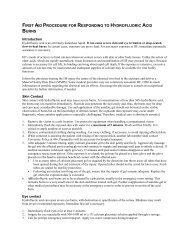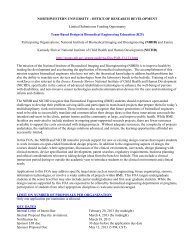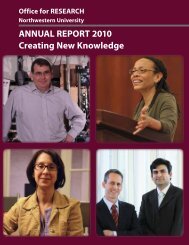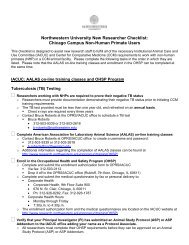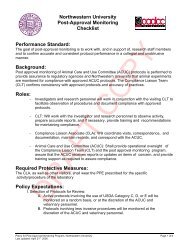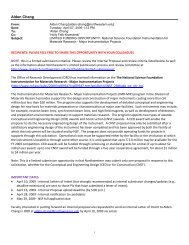annual report 2011 - Office for Research - Northwestern University
annual report 2011 - Office for Research - Northwestern University
annual report 2011 - Office for Research - Northwestern University
Create successful ePaper yourself
Turn your PDF publications into a flip-book with our unique Google optimized e-Paper software.
Anne M. Koenig<br />
Weinberg College of Arts and Sciences<br />
Mental Illness in the Middle Ages<br />
The place of the mentally ill in society and understandings<br />
of what constitutes mental illness are contested topics<br />
even in today’s world of modern medicine and societal<br />
resources. The modern world is often quite literally baffled<br />
by mental illness, unsure where the responsibilities <strong>for</strong> its<br />
causation, diagnosis, and care truly lie. Although conscious<br />
of their own successes, but perhaps even more so of their<br />
shortcomings, scholars and nonscholars alike have tended<br />
to think that people be<strong>for</strong>e the modern age were there<strong>for</strong>e<br />
especially barbaric in their approach to mental impairment.<br />
The medieval world, so the narrative goes, must have<br />
40 Annual Report <strong>2011</strong> | Excellence in <strong>Research</strong><br />
Above: photo of an 18th century fresco in the Church of St. Leonard in<br />
Inchenhofen, Germany, depicting the saint releasing victims of physical and spiritual<br />
captivity. Top left inset: excerpt from a 14th century manuscript of Constantinus<br />
Africanus' medical text, the Viaticum, showing the entry <strong>for</strong> the condition of<br />
“frenzy” (frenesis). All photos courtesy of Anne Koenig.<br />
viewed the mentally ill as demonically possessed and shunned<br />
them out of fear and superstition.<br />
Yet Anne M. Koenig, history graduate program, has uncovered<br />
a picture of late-medieval society in which ideas about<br />
mental distress were multilayered and the mentally impaired<br />
themselves were far more integrated into society than<br />
previously suspected. Drawing on a variety of late medieval<br />
sources, her work brings into focus a network of complex<br />
understandings of and reactions to mental illness. Her work<br />
argues that contemporary medical texts were quite concerned<br />
with cognitive ailments and emotional health and that late<br />
medieval miracle narratives bear witness to structures and<br />
processes of support, management, and healing <strong>for</strong> the mad.<br />
Perhaps most significantly, by combing the municipal financial<br />
records in the archives of Munich and Nuremberg, Koenig<br />
found that city leaders were routinely confronted with the<br />
need to manage the mentally impaired in their midst. Official<br />
reactions to these “problematic mad” ran the gamut: from<br />
expulsion and temporary imprisonment to gifts, privileges, and<br />
a commitment to ensure their long-term well-being inside the<br />
city. Koenig argues that these encounters with the “urban mad”<br />
helped to define and to map the town itself, as well as to carve<br />
out the contours of a surprisingly progressive urban social<br />
responsibility.<br />
Koenig’s research and writing have been funded by a Fulbright<br />
Grant, the Dolores Zohrab Liebmann Fellowship, and the<br />
<strong>Northwestern</strong> <strong>University</strong> Presidential Fellowship. Her faculty<br />
advisor is Dyan Elliott, history.






